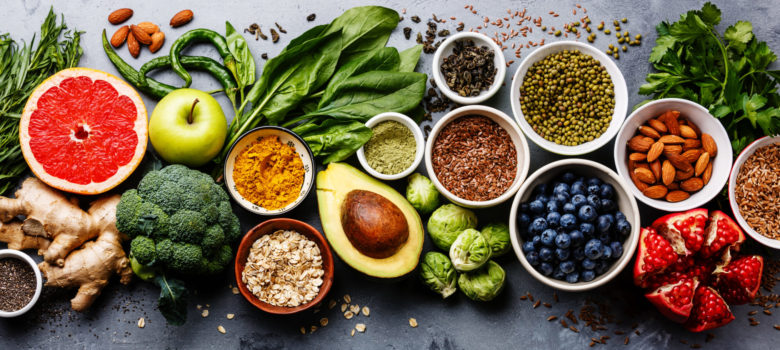
With all the media coverage around healthy eating and becoming more educated about what we consume, it’s easy to see why so many people are ditching the processed foods and giving up red meats. But can what you eat really have that much effect on the environment? What is a climate change diet? Does an environmentally friendly diet have to mean going vegan?
How does my diet affect the environment?
Essentially what it comes down to is how much climate-warming greenhouse gasses they emit through their production. It also factors in the amount of land, fresh water, and energy used across their processing, packaging, and transportation.
For the raw data we’ve referenced here, we’re using stats pulled from the Ecotrust, the BBC, and the Agroecology and Environment Research Division in Zurich.
What are the foods with the biggest and lowest environmental impact?
Proteins
As you might expect, meat is the biggest contributors to climate change. This is due to a few basics of farming and agriculture.
Firstly, livestock is exceptionally inefficient at converting food to body mass. For a cow to gain a kilogram of body weight, it would need an average of 10 kilograms of feed. All that feed comes with its own associated carbon costs too, which is one of the biggest reasons that red meat is so much worse for the environment.
There’s also the big smelly factor of methane; animal farts are a huge problem for global warming. Cows are the biggest offenders, producing an average of 70-120kg of methane every year. When you consider that methane is more than 20x more harmful to the environment than CO2, that’s a whole lot of negative impact for a burger.
We also need somewhere to put our animals, as well as grow our soya and beans and other proteins, which often means clearing out forest lands. Deforestation is extremely bad for the environment, removing trees and plants that would help absorb CO2 and temper the negative effects of emissions. Clearing of tropical forests and rain forests and converting it to grazing land and farmland is responsible for an extra 2.8 billion metric tons of CO2 every year.
It’s not all about meat though; the impact of livestock is why dairy products rate highly too. Meanwhile, the increasing popularity of soy and tofu is also guilty of deforestation.
Fruits & Vegetables
The avocados have turned on us! You might be surprised to learn that avocados are some of the worst offenders in the fruit and veg category, but most of it comes down to the nature of the crop. Chilean avocados take nearly 100 gallons of water to produce a single pound of avocado. They also require a lot of heat, which means that we import them from primarily from Mexico and South America. That’s a long old carbon-guzzling way to come before they end up in your brunch.
The best fruit and veg to eat is, unsurprisingly, whatever is local and in season. Strawberries in December and pumkin in May aren’t ideal, even when local, as the extra carbon cost of growing them out of season is a problem. Try to get familiar with what is the best prouce for the time of year.
That said, even the most carbon cost-heavy fruits and veg have much less of an impact than the best meats.
Carbs
The big surprise here is how much worse rice is for the environment than other starches. According to Oxfam, growing rice accounts for a full third of the planet’s annual freshwater use, which is a truly staggering amount. Flooded rice paddies also create a large amount of methane and nitrous oxide, and that’s before we’ve even considered transport. Two-thirds of the world’s rice is grown in Asia, so getting it to our local Indian takeaway has a carbon cost too.

Minimizing the environmental impact of your diet
If you’re looking to reduce climate change with your diet, there are a couple of fundamental changes you can make to your lifestyle that will help lower the environmental impact of what you eat:
Eat less meat and fewer animal products
Around a quarter of global emissions come from food, and more than half of that comes from animal products. Project Drawdown estimates that if 50% of the world’s population restricted their diet to a plant-rich plan and stuck to 2,500 calories per day, an estimated 26.7 gigatons of emissions could be avoided from this change alone by 2050. An additional 39.3 gigatons could be saved if the deforestation of land use is included in that figure too.
Going fully vegan might not suit everyone, but try to source your meat responsibility and choose your proteins thoughtfully.
Buy local
Transporting food across the world accounts for a vast proportion of its environmental impact. Even if you switch to a vegan regime, if all your fruit and veg is imported then your diet could still have a significant negative affect.
Local markets are excellent for low-impact produce, and tend to have some of the best food around, as well as supporting local business. If the farmers market sounds a little out of your budget, you can still minimise your contribution to climate change when at the supermarket by checking where your produce is from. Try to buy British as much as possible.
Think we missed something? Do you have a different opinion?
Comment below to get your voice heard…


















No Comments yet! Be the first one.